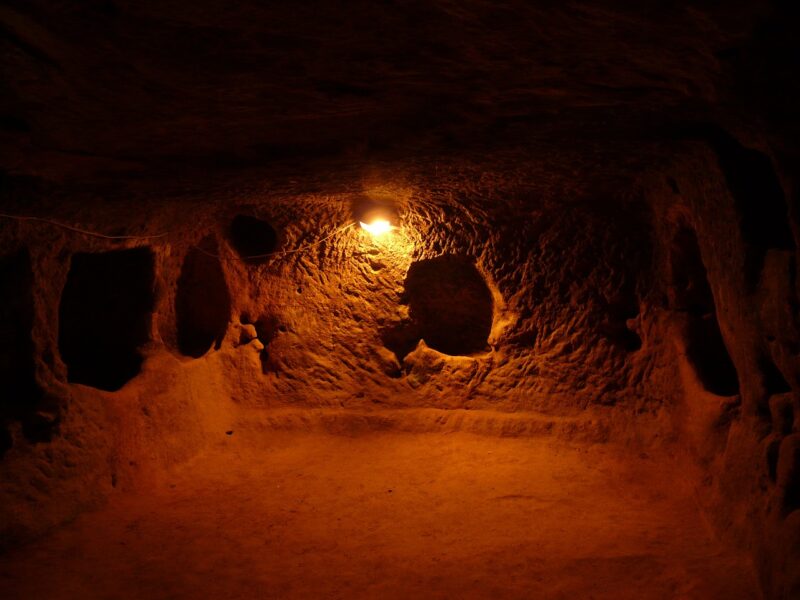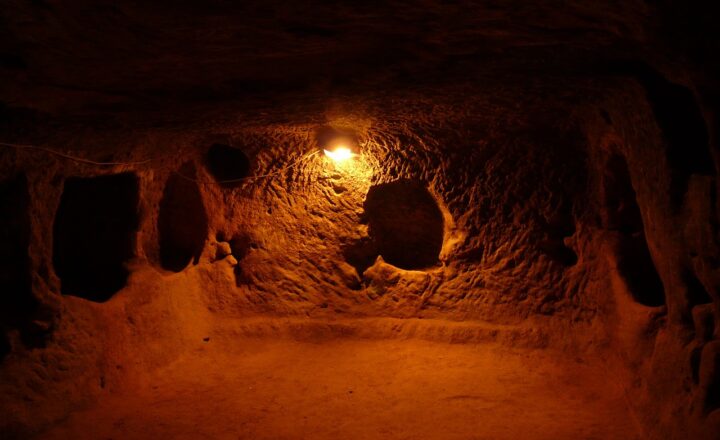The Secret Underground Cities Built for Purposes We Still Don’t Understand
November 12, 2024

Throughout history, humanity has displayed a remarkable aptitude for construction; however, there are some structures that provoke more questions than answers. Among these enigma-laden creations are the secret underground cities of varying civilizations around the world. From ancient times to recent discoveries, these subterranean spaces raise intriguing inquiries about their origins, purposes, and the knowledge of societies that built them. In this article, we’ll delve into the most fascinating underground cities, explore their functionalities, and discuss why many aspects of them remain shrouded in mystery.
1. Understanding Underground Cities – A Glimpse into History
The concept of underground cities may sound like a plot from a dystopian novel, but numerous real-life examples challenge our perception of historical living spaces. These multi-layered structures often hint at complex societies and intricate technologies well ahead of their time. The following examples showcase underground magnificence.
– Derinkuyu, Turkey: One of the most extensive underground cities discovered, Derinkuyu is an ancient multi-level city that could reportedly accommodate around 20,000 inhabitants along with their livestock and food stores. Its air shafts, wells, and ventilation systems showcase engineering expertise that developed in the eighth century BC.
– Montreal’s RESO, Canada: A modern underground complex, RESO connects over 32 km (20 miles) of shopping centers, metro stations, and hotels. This urban planning feat offers insights into contemporary living and maintaining comfort amid harsh winter conditions, yet does it reflect a deeper necessity of safeguarding against environmental challenges?
– Wieliczka Salt Mine, Poland: While primarily a functioning salt mine, Wieliczka has become a fascinating underground network with chapels, sculptures, and even a museum. Its dual purpose—historical salt extraction and tourist attraction—opens discussions about its relevance to both past and present.
These cases are just the tip of the iceberg, representing societies attempting to forge networks beneath the earth, for reasons we often fail to comprehend fully.
2. Purposes Behind Underground Construction
While some underground cities functioned as living quarters and places of commerce, their full purposes often remain elusive. Here are a few identified functions:
– Sanctuaries: Many ancient civilizations may have built underground cities to seek refuge from invasions or natural disasters. These hidden spaces provided security, allowing people to remain protected while still being able to live their everyday lives.
– Religious Sites: Underground sanctuaries or temples seem to resonate as sacred spaces for numerous cultures across time. For example, the ancient Naqsh-e Rustam in Iran includes tombs carved into the mountains, hidden from sight yet significant to religious practices.
– Mining and Resource Extraction: The desire to access valuable minerals and resources led many societies to extend their reach below ground. The intricacies of mine systems evolved into settlements, forming underground towns driven by economic motives.
– Storage and Preservation: Cities that faced the threat of warfare or natural disasters often used underground spaces for food storage. The lack of light and temperature fluctuations made these locations suitable for preserving perishables.
Though these purposes may seem logical, they do not encompass the entire breadth of the function or reasoning behind these grand subterranean complexes.
3. The Technological Marvel of Underground Cities
The ingenuity required to construct expansive underground cities often indicates advanced understanding and skill. Despite the technological constraints of their time, these cultures achieved the following:
– Innovative Ventilation Systems: Structures like Derinkuyu reveal carefully designed airflow systems, ensuring adequate circulation in tight quarters. This level of engineering resonates even today with civil engineers seeking to optimize underground environments.
– Sophisticated Water Management: Many underground cities feature clever aqueduct systems or wells that cater to the water needs of their inhabitants. Historical records indicate that these systems remained functional over centuries.
– Spatial Optimization: The architectural prowess involved reveals a commitment to maximizing space. Levelled structures, hidden rooms, and interconnected pathways suggest deliberate planning often lost on contemporary builders.
Progress in our construction methods owes a debt to these ancient technologies, yet parallels between ancient solutions and modern problems prompt questions: What else did they know that remains lost?
4. The Mystery of Unknown Applications
The enigma surrounding several underground spaces is amplified by their unexplained purposes. For instance, odd artifacts or peculiar markings have led researchers to hypothesize about their function without arriving at concrete conclusions. Examples include:
– Terezin, Czech Republic: Initially designed as a fortress, Terezin served multiple roles throughout its history, including as a Jewish ghetto during World War II. Today, its existence as a site of suffering and resilience raises philosophical discussions surrounding preservation.
– Sagrada Família Crypt, Spain: This unfinished basilica features startling architectural features concealed beneath its surface. Although tied to religious significance, its completedness sparks debate about unseen realms.
– The Catacombs of Paris, France: These underground ossuaries store the remains of over six million people, originally intended to combat the overflowing graves of urban cemeteries. The existential themes of life, death, and memory envelop this macabre site with enigma.
The unknown forces us to confront the past while forging paths for future inquiries into human motivations and actions.
5. Conclusion: The Enduring Legacy of Underground Cities
The secret underground cities of our world are akin to graveyards of lost knowledge, hinting that our ancestors undertook pursuits we may not fully grasp today. As archaeological methods and technology evolve, perhaps we will piece together fragments of their intentions and understand the lessons within their labyrinths. Undeniably, their legacy endures, inviting generations to unravel the whys and hows lead into this shaded realm.
Every survey, excavation, or exploration here is a testament to human resilience and creativity, as we move through our own storied paths throughout history, seeking answers to our world’s unexplainable mysteries.
What other secrets lie beneath the surface yet to unearth? It is indeed an exciting thought.







